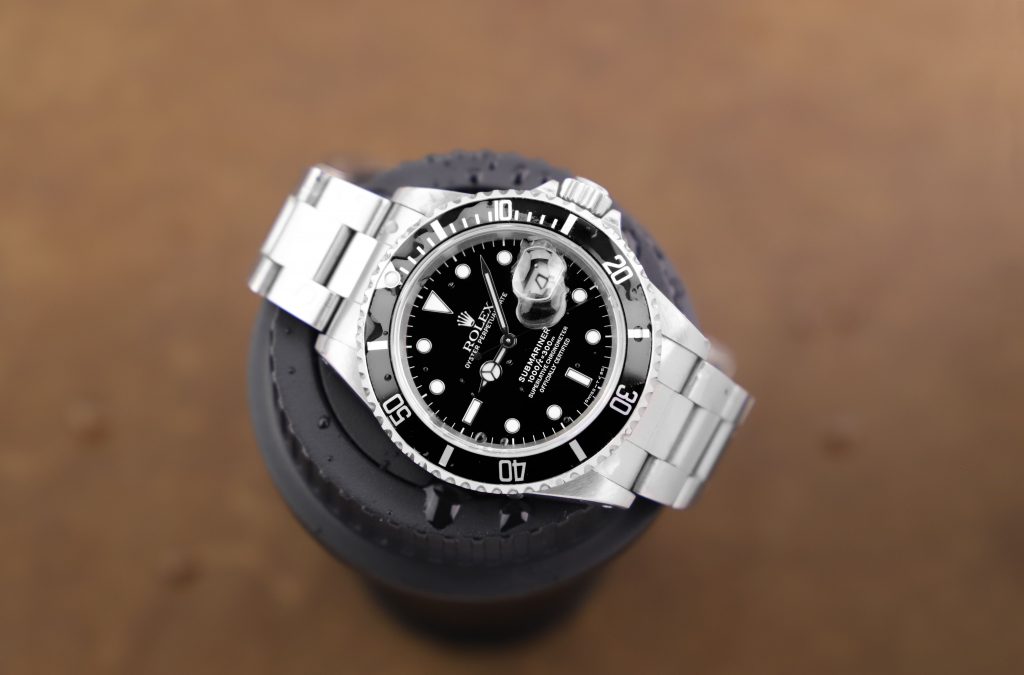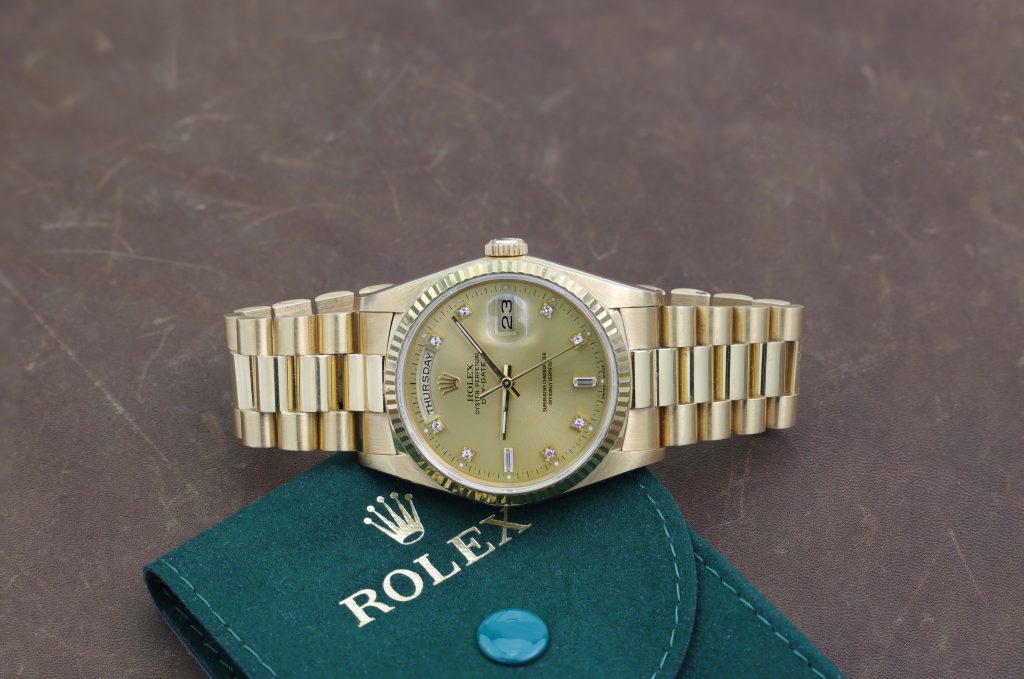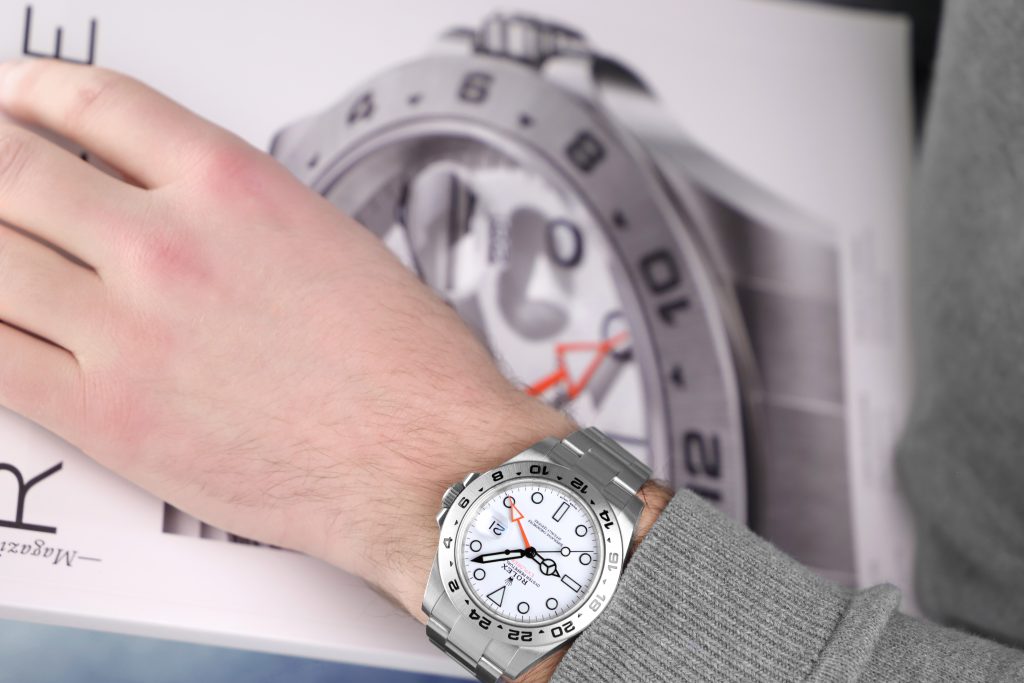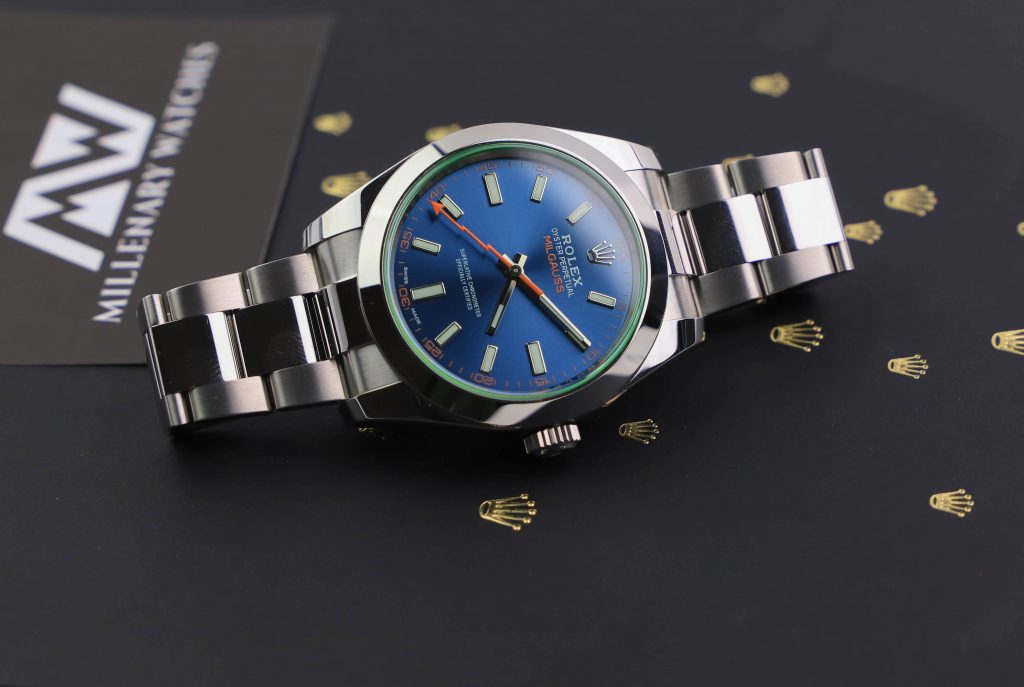
Top 10 Iconic Rolex Watches [List & Guide]
There are very few brands in any market that have successfully positioned themselves in the dream position in which Rolex is located. The demand for Rolex watches exceeds the supply, making them not only hard-to-get watches (at retail) but a topic that draws attention.
Over the years Rolex has become associated as a brand that manufactures watches made for the hard demanding client who expects perfection and reliability, which shall never fail.
Ever since Rolex first introduced their “Oyster Perpetual” watch, which was a suiting name for a water and dustproof watch, with a rotor that kept the watch running without stopping, the market team of Rolex has positioned each model Rolex has presented as a watch only for the best in different fields.
The GMT Master was first released as “the” watch for aviation, the Daytona was released as “the” racing watch, the Submariner was released as “the” divers watch, and so on. Because of all this, and the well reputable reputation that Rolex has gained over the years, naturally Rolex has a few watches that are so much iconic, that even a non-watch enthusiast or interested person would recognize the model from somewhere. In this article, we’ll cover the Top 10 Iconic Rolex Watches ever presented by Rolex.
Rolex Cosmograph Daytona
The Rolex Cosmograph Daytona was first presented in 1963 with the reference 6239, which was in production until approximately 1969. The Daytona has ever since gotten developed and improved with new movements, bracelets, case sizes, and different dial and bezel configurations, but despite it being “the” race watch, it struggled to gain popularity during the 60s, 70s, and 80s as it was competing against Tag Heuer Monaco and Zeniths El Primero.
However, in the 90s the Daytona gained interest and has forever since been a watch hard to acquire directly from an Authorized Dealer. The iconic model, with three sub-dials, has since its’ first release in 1963 as the Daytona, remained true to its original DNA, with design elements that have remained more or less the same. Despite different configurations such as the Daytona being sold on a leather strap, or rubber strap, the watch being in gold, or having the bezel in different materials, the DNA of the Daytona has always remained.
In today’s market, the Daytona is a watch so hard to acquire that enthusiasts and buyers question if the model even gets delivered by Rolex to authorized dealers, as the demand for the watch never gets met by the supply.
Rolex Submariner
The Rolex Submariner is perhaps the most well-recognized watch from Rolex ever made. The true tool watch made by Rolex to withstand underwater activities by divers has forever since its’ release in 1953 been an important watch to the watch market, as it to many, resembles what a divers’ watch should look like.
Just as the Daytona, and any other Rolex for that matter, the design elements of the first reference that was released, still are present in the latest model. Rolex is a company that focuses on evolution rather than revolution, which is a strong key factor why today’s Submariner, still looks a lot like the first Submariner in 1953.
The first Submariner reference 6204 (Which is debated, but unofficially accepted as the first Submariner by many), did actually not have a date function, commonly known as a “no-date Submariner”. Over the years in the development of the Submariner, different configurations, such as the Submariner with a date, have been added to the Rolex portfolio, along with Submariners in different materials and different dial and color configurations.
The first Rolex Submariner was actually “only” waterproof to 100M, or 330FT, but is today water-resistant to 300M/1000FT. What perhaps is unique about the Submariner, is its unidirectional bezel which can be rotated in the purpose to time your dive underwater, but also the clasp which has some sort of extension system, such as the Glidelock, which is made so that you can wear the watch as a daily watch, but also extend the length of the bracelet so that it is big enough to fit over your diving suit.
Rolex GMT Master II
The GMT Master was first released in 1954 as a cooperation between Rolex and the, at the time, leading airplane company, Pan AM, The GMT Master was essentially a Datejust, with an added GMT-hand, and a bi-directional rotating bezel in the color Blue and Red, which would resemble Day and Night.
The GMT Master has since its’ release been given different nicknames, often based on the color of the bezel, such as “Pepsi”, “Coke”, and “Licorice”. The GMT Master evolved and is today available as the GMT Master II, is the watch made for leading pilots which used the added forth GMT hand to keep track of the time in your home country, along with the normal hour and minute hand to keep track of the local time. With the rotating bezel, it is actually possible to keep track of three different timezones simultaneously.
The watch is water-resistant to 100M and has and is available on the Oyster bracelet, seen above on the Submariner, and a Jubilee bracelet from time to time.
Rolex Day-Date
The Rolex Day-Date is to many the perhaps most prestigious watch ever made, and a dream to acquire for many. The model is known for only being manufactured in precious metals such as white, rose, yellow gold, platinum, and sometimes a mix of materials. Commonly known as the “presidential watch”, the bracelet of the watch is actually called the “Presidential bracelet“, and has only been available to the Day-Date and Datejust in precious metals.
The Day-Date just as the name suggests tells not only the time but also which day and date it is. Over the years, different movements have been made and used for the Day-Date making it possible to quick-adjust the Day separately from the Date using the crown in the first position. What’s even more interesting to many, and what’s special about the precious Day-Date, is the different dial configurations that have been available, and to some degree still are available for the model
In the past, we could see materials such as burlwood, onyx, meteorite, and Lapis Lazuli to mention a few, be available on the Day-Date in 36mm. The size of the Day-Date has for a very long time only been available as 36mm, but in recent years, a bigger version of the classical 36mm size case has been added to the Rolex portfolio, and today the Day-Date can be seen in both 41 and 40mm.
Although the Day-Date mostly is known for being available on the Presidential bracelet, it has been sold on a few different bracelets such as the Oyster, Jubilee, and brick bracelet, but also on leather straps which sometimes have a matching color of the dial.
Rolex Datejust
A detail on almost any Rolex that displays the date, is the iconic date bubble, or cyclops, which magnifies the Date 2,5x. According to Rolex themselves, the date bubble was first added on the Datejust, and the reason behind it was that Hans Wilsdorf’s wife, had a hard time telling which date it was when the age caught up, and the solution to the problem is what we today is what we so strongly associate with a Rolex watch.
The Datejust, just as the day-Date, can be seen in different materials, often a mix of materials such as stainless steel and yellow gold, but also with different bracelets and leather straps. The Datejust first debuted in 1945 as the reference 4467 (Without a date bubble) and is today one of the models which sell the most in any Rolex store.
One reason behind it might be the fact that it is manufactured in so many configurations, that there is a Datejust for every taste, but perhaps also because of its true elegance, which depending on the bracelet, dial, and bezel type can be worn as a daily watch suitable for almost any occasion. The Datejust has been available in many different sizes, but the perhaps most iconic sizes are the 26mm for Ladies, 36mm for gents, and also the new sportier version which is available in 41mm.
Rolex Explorer II
The watch made for explorations, and the function to keep track of day and night, whilst deep down exploring caves, is the Explorer II. The was first released as reference 1655 with a black dial in 1971. The watch is to many a true tool watch, with a very industrial look that is made to be used for any type of outdoor activity that needs a reliable watch.
The Explorer II has a fixed bezel in stainless steel, and a fourth GMT hand, which is supposed to be set at the same time as the hour and minute hand, but with the function to distinguish day from night, where the sun doesn’t reach.
The first reference 1655 got replaced by a transitional reference 16550 in 1985, where a white dial was presented as an alternative to the black dial. The original size of 40mm was increased to 42mm in 2011, and the big contrasting orange hand with the matching “Explorer” text on the dial are design elements that, to many, are appealing.
Rolex Oyster Perpetual
The Rolex Oyster Perpetual designation can be found on any Rolex watch that is resistant to at least 100M, and have an automatic movement. The word Oyster indicates waterproofness, and the word Perpetual is something that is consistent and won’t stop working which alludes to the automatic movement.
To many, the Oyster Perpetual is the perfect entry-level Rolex, which only displays the time in classical sizes. As of 2022, the Oyster Perpetual is available in 28, 31, 34, 36, and 41mm.
However, despite the watch often known as the entry-level watch for Rolex, ever since the new bold colors were presented in 2020 by Rolex, the model has become quite hard to acquire from an Authorized Dealer. The Oyster Perpetual features a stainless case and oyster bracelet and is a perfect everyday watch, which is suitable for most occasions.
Rolex Explorer

The Explorer is just like the Oyster Perpetual a technically simple watch that displays time with the hour, minute, and seconds hand. The Explorer was first released in 1953 as the watch for explorers, which had missions such as climbing onto the top of Mount Everest.
The simple black dial with stick index with complimentary Arabic indices on the 3, 6, and 9 o’clock positions is characteristic of the Explorer. The Explorer is mostly known for its case size which is 36mm, however, in 2010 Rolex released the reference 214270 (seen in the picture) which had a new case size of 39mm.
It wasn’t until 2021 when Rolex updated the Explorer and re-introduced the classical size of 36mm, and also introduced a first-time in the Explorer collection, a bi-colored Explorer in stainless steel and yellow gold.
Rolex Milgauss
The Rolex Milgauss is a watch made for the Ingenieur exposed to magnetic fields. Just as the name suggests, the Milgauss is resistant to a thousand (Mil) Gauss.
In today’s market, one thousand gausses are not much to compete with when it comes to what the movement is resistant to, but when it first was released in 1956 the model was competing against Omegas Railmaster and a thousand gauss was definitely a benchmark in watchmaking. If a watch gets exposed to magnetic fields, the movement can get magnetic, which can affect the function of the movement causing it to not work properly.
Rolex Sea-Dweller
In 1967 Rolex released a follow-up model of the Submariner which was for serious underwater activities. The result was the Sea-Dweller reference 1665 which was water-resistant to 500M/1650FT.
Since 1967 it has gotten improved by Rolex, and in 2017 to commemorate the 50th Anniversary of its launch, Rolex released the reference 126600 which featured a 43mm case and the model name “Sea-Dweller” in red lettering. The modern Sea-Dweller has however improved features and is water-resistant to 1200M/4000FT, making it a watch made for almost any professional underwater mission, with very few exceptions.
What do you think of the list of Top 10 Iconic Rolex Watches that we have assembled? Do you agree or which model would you rather see on the list?













